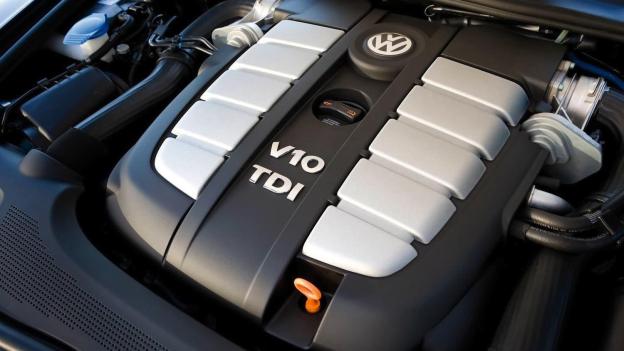
Around the time of the global recession, automakers like Mercedes-Benz and BMW began to discontinue big, V8 diesel engines in passenger vehicles, citing the need to cut costs.
This V8 diesel recession left a big void in the market, though, and Volkswagen’s Ferdinand Piech and the Fiat Group’s CEO Sergio Marchionne are eager to fill it.
Piech has always loved big diesels. We needn’t look much further than the Touareg V10 diesel for a perfect example of his affections.
Across the channel lies another diesel lover: Land Rover. Despite the shifting diesel V8 sands in the early 2000s, the British 4×4 maker continued to sell its Ford-sourced and Mexico-built 4.4-liter diesel V8 in many of its full-size offerings outside the U.S. When we spoke to Jaguar/Land Rover representatives last month, they confirmed for us that diesel Land Rovers will soon be headed Stateside.
Back in Italy, sources told Car and Driver that Fiat is hot on the trail of a turbocharged V8 diesel for global application.
Fiat, one of the world’s largest automakers, recently unveiled the Maserati Ghibli with a twin-turbo V6 diesel producing 275 horsepower. If that engine gets enough diesel hearts pounding, it might not be long before Fiat debuts a direct-injected 4.0-liter V8 turbo diesel. Based upon the Ghibli’s power output, a 4.0 could make 360 horsepower and 460 pound-feet of torque.
In Germany, Piech’s proven big diesel is big money. Apparently the 382 horsepower Porsche Cayenne S Diesel has the longest waiting list of any of the VW Group models.
The more big diesels we drive, the more we like them. With an abundance of torque, high efficiency, and diminished emissions, we see lots of reasons to bring diesel V8s to the U.S. If only customers could manage to forget the General Motors 350 V8 diesel of the 1970s.
Photo credit: picstopin.com
Editors' Recommendations
- Fiat-Chrysler pressured dealers to take extra inventory to boost sales numbers
- DieselGate continues to haunt Volkswagen as massive class-action suit is filed


